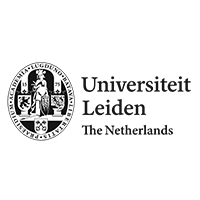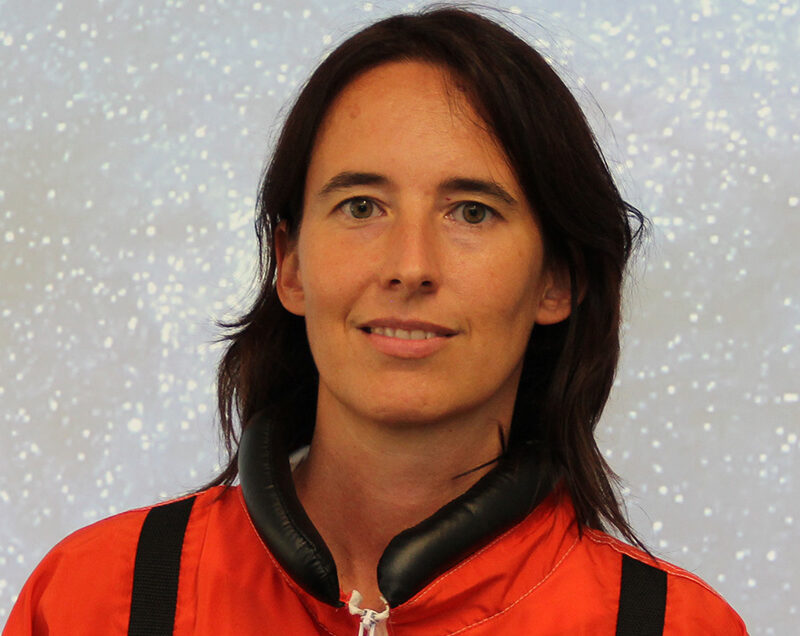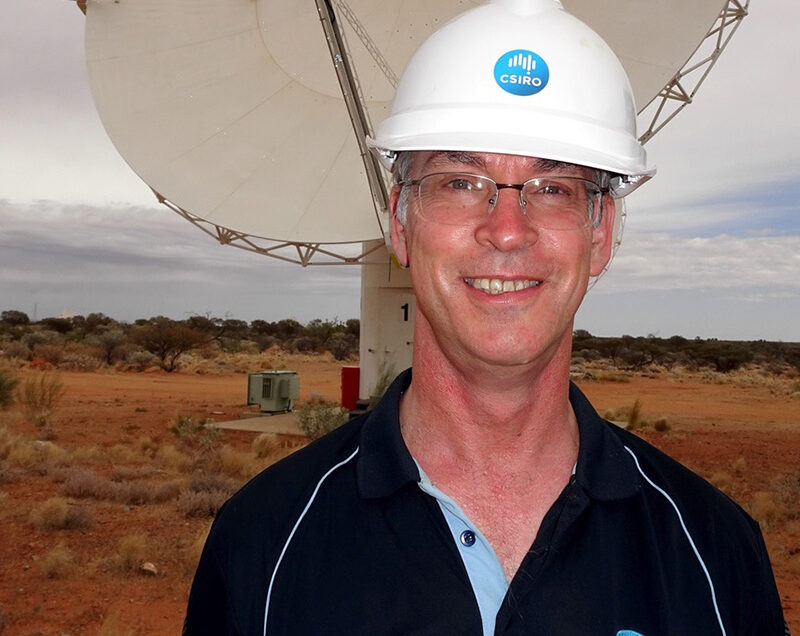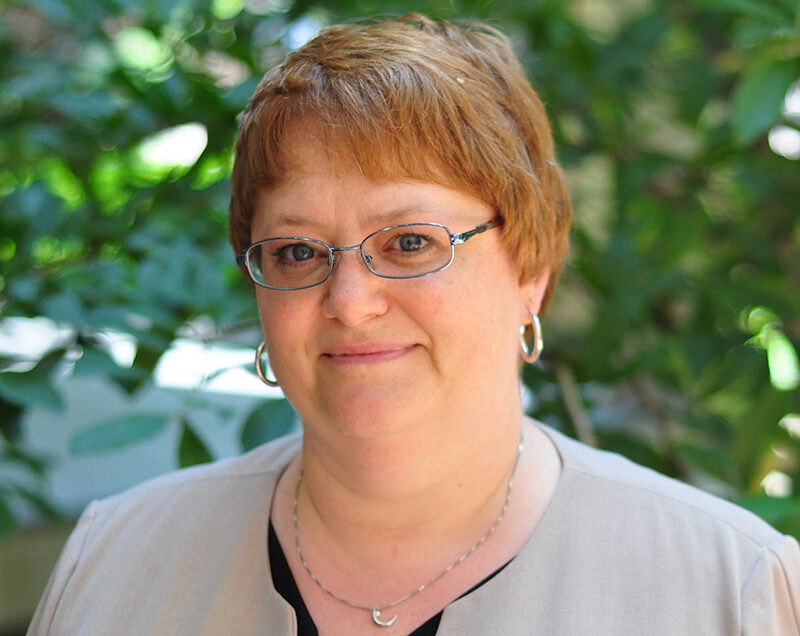-
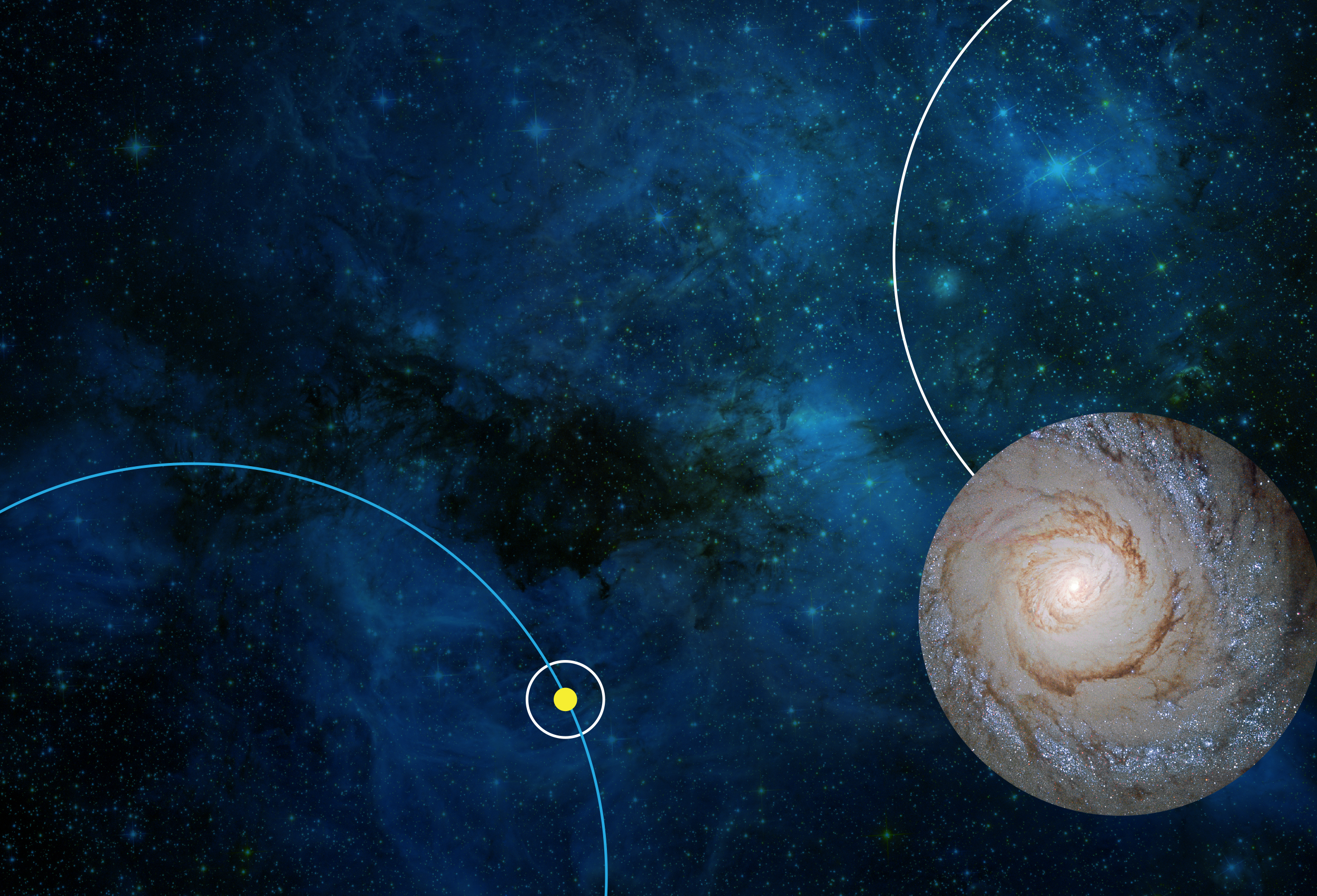
 CONFERENCE 2023MAY 2023Toronto, CanadaDetails Coming Soon...
CONFERENCE 2023MAY 2023Toronto, CanadaDetails Coming Soon... -
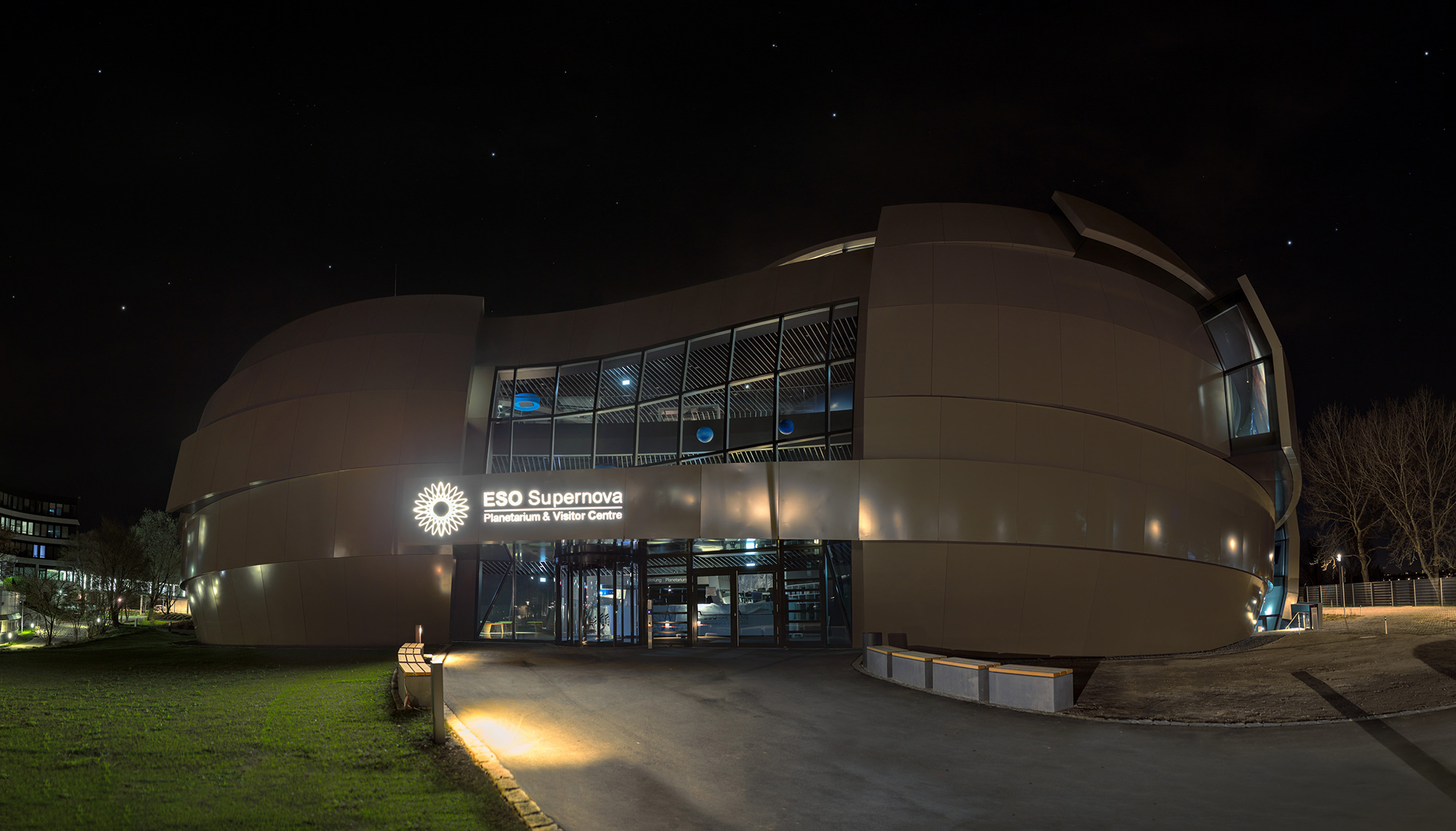
 CONFERENCE PROCEEDINGS 2019Published Conference Proceedings
CONFERENCE PROCEEDINGS 2019Published Conference Proceedings -
 Bridging Research & PracticeAstronomy Education16th - 18th September, 2019About the Event
Bridging Research & PracticeAstronomy Education16th - 18th September, 2019About the Event 2019ESO (Garching, Munich, Germany)Information
2019ESO (Garching, Munich, Germany)Information -
 Bridging Research & PracticeAstronomy EducationKeynote Speakers Announced201916th - 18th September, 2019Conference Schedule released
Bridging Research & PracticeAstronomy EducationKeynote Speakers Announced201916th - 18th September, 2019Conference Schedule released
About The Event
The field of astronomy education has grown significantly over the last few decades, with an increasing number of research articles having been published by a growing number of academic and practitioner groups. Despite this, there has been no regular international conference place for astronomy education researchers and practitioners around the world to convene and discuss their work in the field. Hence this meeting is intended to be the first of a regular, biennial, IAU Commission C1 Astronomy Education Conference with an aim to increase the quality, quantity, community and impact of astronomy education research and practice.
This conference aims to bring together astronomers, astronomy education researchers and education practitioners to communicate, discuss and tackle common issues. The three key topics span traditional and practical research exploring the purely theoretical to issues encountered attempting to embed research results into practical situations, usually mediated by standards, curriculum and instruction. The conference will also provide an opportunity for the community to discuss the results in astronomy education stemming from the IAU Strategic Plan 2010-2020 and discuss the requirements for meeting the next IAU Strategic Plan goals regarding astronomy education.
Scientific Organising Committee Co-Chairs
Paulo S. Bretones (Universidade Federal de São Carlos, Brazil)
Urban Eriksson (Lund University, Kristianstad University, Sweden)
Pedro Russo (Leiden University, Netherlands)
Scientific Organising Committee
Janelle Bailey (Temple University, USA)
Ian Bearden (University of Copenhagen, Denmark)
Lars Lindberg Christensen (ESO, Germany)
Rosa Doran (NUCLIO – Núcleo Interactivo de Astronomia, Portugal)
Michael Fitzgerald (Edith Cowan University, Australia)
Tania Johnston (ESO, Germany)
Katrien Kolenberg (Antwerpen University, Belgium)
Nicoletta Lanciano (Università di Roma “La Sapienza”, Italy)
Anthony Lelliott (University of the Witwatersrand, South Africa)
Christine Lindstrøm (University of New South Wales, Australia)
Amelia Ortiz-Gil (University of Valencia, Spain)
Mark Subbarao (IPS/ Adler Planetarium, USA)
Akihiko Tomita (Wakayama University, Japan)
Local Organising Committee
Wolfgang Vieser (ESO, Germany) – LOC Chair
Nelma Alas Silva (ESO, Germany)
Tania Johnston (ESO, Germany)
Álvaro Caseiro de Almeida (ESO, Germany)
Lars Lindberg Christensen (ESO, Germany)
Saeed Salimpour (Deakin University, Australia)
16 to 18th September, 2019
Monday to Wednesday
ESO
Garching, Munich, Germany
Astronomy Education Research
• Research & practice in Astronomy Education
• Innovations in research methodologies and instrumentation
• Surveys of the current state of astronomy education research
• Evaluating approaches for teaching and learning
Astronomy Education Standards, Curriculum and Instruction
• New trends in Astronomy Education
• Tools, Programmes and Resources in Astronomy education
• Virtual and augmented reality in teaching and learning astronomy
• Curriculum development, literacy, standards and policy
• Student research experiences in astronomy education
Primary and Secondary Teacher Education
• Designing and implementing training programmes for pre-service and in-service teachers.
• Astronomy-related research experiences for teachers and informal educators.
Keynote Speakers
Subscribe to our Mailing List
Click here to Subscribe NowAbstract Submission
Thank you to all who have submitted! Abstract Submissions are closed.
All inquiries about abstracts and presentations please contact us
Travel Grant Application
Travel Grants have now closed. Thank you to all who submitted!
Important Information
31 May, 2019
Early-Bird Registration Deadline
7 June 2019
Abstract Submission Deadline
Travel Grant Application Deadline
22 July, 2019
Announcement of Abstracts
Announcement of Travel Grants
15 August, 2019
Standard Registration Deadline
Early bird EUR 225
Standard Registration EUR 300
Travel Grant Application information will be available soon
Conference Dinner
Come and relish a Bavarian dining experience at Gasthof Neuwirt Garching.
Conference Schedule
Please note that this schedule is subject to change if we have requests for changes
Day 1
Monday - September 16, 2019Day 2
Tuesday - September 17, 2019Day 3
Wednesday - September 18, 2019
- 08:30 - 09:30
Registration/poster set-up/workshop set-up
The Adventure begins hereGround Floor - 09:30 - 10:00
Welcome Address
By Teresa Lago IAU General Secretary, Tania Johnston ESO, Paulo S. Bretones Universidade Federal de São CarlosWelcome from the IAU, ESO and Conference ChairsPlanetarium 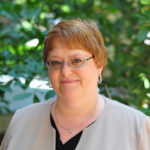 10:00 - 11:00
10:00 - 11:00Keynote 1 - AER Pathways: Recent Research and Future Directions
By Janelle M. Bailey Temple University, USAAstronomy education research (AER) offers insights into a variety of topics, such as teaching and learning across formal and informal setting, professional development for teachers and faculty, attitudes and beliefs about astronomy, and public understanding of astronomy topics. The field has broadened dramatically from being focused on identification of naïve conceptions and the evaluation of teaching strategies. Collaborations across many settings and areas of expertise are allowing astronomy education researchers to push boundaries into new areas of research. Likewise, publication venues vary widely, providing both opportunities and challenges to researchers who want to share their research with the larger community. Future directions for AER include but are not limited to improved methodological designs, such as the use of mixed methods or robust quantitative analyses; longitudinal studies; and new topics such as spatial thinking in astronomy, motivation and related constructs, and the use of visualizations and simulations.Planetarium- 11:00 - 11:30
Coffee Break
RechargeGround Floor - 11:30 - 11:45
Astronomical Midlands: Engaging Rural Communities in Ireland with Radio Astronomy
By Áine Flood I-LOFAR Education Centre/School of Physics, Trinity College DublinThe Irish Midlands has a rich heritage in astronomy, a fact that is not well known in this region of higher than average unemployment and low uptake of post-secondary education. We have therefore embarked on a regional engagement project – the Astronomical Midlands (AstroLands) – which uses the recently constructed Irish Low Frequency Array (I-LOFAR; lofar.ie) radio telescope and I-LOFAR Education Centre at Birr Castle in the Irish Midlands to connect with students, teachers and members of the public in local, rural communities in the Midlands. In this presentation, we will describe our three key initiatives: Space4Exploration: Developing an engaging, inspirational, and multi-use exhibition space in the I-LOFAR Education Centre; Space4Students: Day-long and week-long workshops and camps at the I-LOFAR Education Centre to run during school terms and holidays for students aged 10 to 14; Space4Teachers: Create and run Continuous Professional Development workshops for primary and secondary school teachers based around the Irish National Junior Certificate (12-15 year olds) theme of Earth and Space. With these programmes our ambition is to inspire and support teachers, students and the general public to engage with the science, engineering and radio astronomy of LOFAR.Planetarium - 11:30 - 12:30
Workshop - Technology and Student Engagement - How to increase (or decrease) Student Learning in classrooms and planetariums.
By Douglas K. Duncan University of Colorado and Fiske PlanetariumI would like to present key results from the Discipline-Based Education Research (DBER) Group at the Univ. of Colorado, the world's leading group researching college science teaching. Our PHeT applets (phet.colorado.edu) have been used 360 million times! I just finished an invited AIP review article, Technology and Engagement in the University Classroom" (in press) and I would talk about: 1. Those who teach astronomy overestimate learning. 2. Student engagement is critical. 3. How technology such as "clickers"" and simple methods such as colored cards can significantly increase learning (with extensive data!) 4. The circumstances under which technology REDUCES student learning. 5. The key discovery that many student misconceptions repeat year after year, and so can be addressed in particular, effective, inexpensive ways 6. How to bring more active learning to planetarium settings or to science-teaching videos. 7. If desired, my latest research on how texting during class influences student behavior and grades, and what to do about thatRoom Sagittarius - 11:30 - 12:30
Workshop - Examining IBSE-type Activities in Astronomy
By Fraser Lewis Faulkes Telescope Project/National Schools' ObservatoryI will present a range of activities, many in the IBSE format, which use real astronomical data, allowing students to explore datasets on objects such as exoplanets, open clusters and supernovae. These activities encourage students to share and reflect upon their results with each other.Room Scorpius - 11:45 - 12:00
The Use of an Authentic Research Experience in Astronomy to Teach the Process of Science
By Travis Rector University of Alaska AnchorageResearch-Based Science Education” (RBSE) is an established instructional model that integrates scientific research with education by giving introductory-level undergraduate astronomy students an opportunity to do authentic research with real data. RBSE is a course-based undergraduate research experience (CURE) in astronomy. Its goals are threefold: (1) to teach that science is a process of discovery, not just a body of knowledge, (2) to improve attitudes towards science and STEM careers, and (3) to develop critical thinking, teamwork and goal-driven work skills that are important in any career path. The RBSE curriculum currently consists of five authentic research projects in astronomy: recovery observations of asteroids, searching for classical novae in M31, studying semi-regular variable stars, identifying active galaxies in spectroscopic surveys, and searching for distant galaxies in imaging surveys. Each project uses real astronomical data from professional observatories to investigate authentic research questions for which the answers are not known. In other words, in order to learn science, students are given the opportunity to actually do science. The results of RBSE student research have been submitted to scientific databases, presented at professional conferences, and published in refereed journals. As part of my talk I will present our results on student gains from participating in the RBSE program. I will also discuss the future of CUREs in astronomy, particularly how they will be able to use data from large surveys such as LSST."Planetarium - 12:00 - 12:15
Are teachers aware of students’ conceptions in astronomy? A qualitative analysis in Belgium
By An Steegen KU Leuven - Department of Earth and Environmental Sciences - Teacher trainingResearch on astronomy education shows that secondary school students often have incorrect ideas about astronomical concepts. Teachers therefore have to implement strategies in their lessons in order to change and refine the students’ mental models. This research focuses on the level of teachers’ awareness of these student ideas and on the possible strategies they use in class. To gain insight in both, we used focus group interviews with secondary school teachers and semi-structured interviews with teacher managers. Our findings suggest that the level of awareness about student difficulties and misconceptions varies considerably among the teachers and teacher managers. Some mental models, for example the distance model, are known by all teachers, whereas others are not known at all. Even though teachers acknowledge the importance of students’ preconceptions in general, they have difficulties using the students’ prior knowledge in an effective way in their teaching practice. According to the teachers, this is mainly due to a lack of time and to difficulties experienced with differentiation. Awareness on misconceptions and student difficulties might therefore grow by paying enough attention to it in preservice teacher programs and by organizing professional development activities.Planetarium - 12:30 - 13:30
Lunch - Day 1
Eat, Drink and be MerryGround Floor - 13:30 - 14:00
Poster Session - Day 1
- 14:00 - 14:15
Astronomy Education beyond borders
By Stefano Sandrelli INAF - Osservatorio Astronomico di Brera, Anna Wolter INAF - Osservatorio Astronomico di BreraAfter the launch in 2014 by IAU/OAD, astroEDU, the platform for high-quality, peer-reviewed astronomy education activities is becoming a standard resource in education. The Italian astroEDU site was launched in September 2017 when astroEDU/it became its first non-English version. While having a site in the local language is obviously useful, there are a number of issues that need to be addressed, both on the practical and the theoretical side. A few examples include: * how to adapt/include the different curricula in different countries; * how to stimulate participation especially from the teacher side; * how to maintain copies of the same document in different languages; * how to assign DOIs of translated text. We suggest to meet with all the interested participants to discuss potential and real issues, on the site in general and on the translations in particular."Planetarium - As part of ESERO Austria, two STEAM workshops were developed for secondary school pupils. "Space Matters" deals with intelligent materials, programmable materials that will play a major role in space travel in the future. “Worldviews - Of scientific observation and creative (re)interpretation” offers an access to the creative use of satellite images up to the creation of one's own images and their transmission via cyanotopy. While STEAM offers often address teachers of classical STEM subjects (chemistry, physics, mathematics, etc.), these Workshops specifically addresses teachers of creative subjects. Applied in class, the focus is on networked and creative thinking and do-it-yourself. Students who are less interested in STEM subjects will be opened an access to STEM topics. This workshop also offers teachers the opportunity to exchange ideas with other subjects, making cross-curricular teaching appealing. https://ars.electronica.art/esero/de/space-matters-zukunftsmaterialien-im-gestalterischen-unterricht/ https://ars.electronica.art/esero/de/weltbilder-von-wissenschaftlicher-betrachtung-und-kreativer-umdeutung/Room Sagittarius
- 14:00 - 15:00
Workshop - Big Ideas in Astronomy: A Proposed Definition of Astronomy Literacy
By João Retrê Institute of Astrophysics and Space Sciences"What does it mean for a citizen to be “literate” in astronomy? Those members of the International Astronomical Union (IAU) who are active in public outreach have practical experience of the kinds of astronomical knowledge commonly held by the general public. Until recently, however, there had not been a systematic evaluation and a clear definition of what astronomical literacy means. Now, the “Big Ideas in Astronomy: A Proposed Definition of Astronomy Literacy” booklet has been released with the aim of clarifying these ideas. It is intended for use by the astronomy education and outreach community, and within a process of community consultation. The booklet is the culmination of years of debate and discussion over the essential things that an astronomically literate person should know. “Big Ideas in Astronomy” is intended to be an evolving resource for the community to contribute to and draw from in working towards their goals. The booklet will benefit wider society by informing nations and states about what constitutes astronomical knowledge for their curricula. It also provides a framework for policy suggestions for governments, teacher training institutes and programs, and a set of guidelines for curriculum development and assessment tools. In this workshop we will present the Big Ideas, and involve participants to contribute their ideas towards next steps for the project.Room Scorpius - 14:15 - 14:30
An Investigation Of Student’s Conceptual Understanding Of Cosmology
By Arturo Colantonio Department of Physics, University of Camerino, ItalyIn this study, we analyse high school students’ conceptual understanding of cosmology. Drawing from previous studies in astronomy education and accepted scientific models of the universe, we identified seven dimensions that we deemed as important to understand key concepts of cosmology: (i) age of the Universe and its determination, (ii) Big Bang, (iii) expansion and future evolution, (iv) how temperature and composition change with time, (v) celestial objects and their relationship, (vi) black holes and dark matter, (vii) time and distance scales. Then, we designed a questionnaire featuring nineteen open-ended questions. Content validity was checked with three professional astrophysicists. The questionnaire was administered to 411 high school students (17 to 19-year-old) who had already received curricular instruction about cosmology in Earth Sciences and Physics classes. Students' responses to questions related to dimensions (i-iv) were first categorized using a grounded approach and then combined through cluster analysis to identify common patterns of students’ understanding. Data suggest that: (a) only 15% of students are aware of any experimental evidence to support the Big Bang or the estimate of Universe age; (b) about two-thirds of the students held alternative or non-scientific views about Universe expansion and evolution; (c) about half of the sample had no idea about how Universe temperature changed in time . Findings raise the question of how to foster a sound conceptual understanding of Cosmology. To address this issue, we are developing a teaching-learning sequence focused on the identified dimensions."Planetarium - 14:30 - 14:45
Learning about the multidimensional universe - challenges and possibilities
By Urban Eriksson Kristianstad University, SwedenWhen students enter the discipline of astronomy, they will face numerous challenges. Not only do they need to use all disciplinary knowledge for physics and mathematics in new ways, they also need to learn the disciplinary ways of knowing in astronomy. These differs from physics and mathematics and one can describe this as learning a new language—astronomy. Theoretically, this is referred to as Social Semiotics and here all communication within a discipline is described by the disciplinary semiotic resources that have been developed by the discipline over extended time periods. In this talk, I will present social semiotics in astronomy and in particular the concept of Disciplinary Discernment and how this is important to consider when teaching and learning about the multidimensional universe. Results from a recent empirical study will be used to exemplify disciplinary discernment of multidimensionality, and I will discuss multidimensional semiotic resources potentials for teaching and learning astronomy.Planetarium - 14:45 - 15:00
Knowledge of astronomical scale: measurement and evaluation
By Christine Lindstrøm University of News South WalesHaving an appreciation for astronomical scale is significant for understanding the foundations of astronomy. However, a key challenge in developing this understanding is the lack of direct ways to acquire this knowledge. Personal experience may even be detrimental, given that our direct experience is of the Earth as something very large, whereas stars are tiny pinpricks of light. As a first step to address this issue, it is necessary to assess people’s knowledge of astronomical scale to identify common misconceptions and evaluate the effectiveness of educational interventions. However, no instruments so far have enabled evaluation of people’s knowledge of astronomical scale for multiple objects. Previous instruments have generally only included a few questions about scale—mostly through multiple choice—limiting the number of objects simultaneously probed to three and often not probing all possible rankings. To measure people’s knowledge of astronomical scale, we developed an instrument that allows for easy collection, analysis and presentation of data ranking multiple astronomical objects (we included up to ten objects). I will present this instrument and the results from three different samples: middle school students (N = 922), pre-service science teachers (N = 41) and visitors to a public guided astronomy night viewing tour (N > 500). For all samples, data before and after astronomy instruction was collected, revealing dominant misconceptions in rankings in astronomical scale and preliminary results on the effects of various types of instruction.Planetarium - 15:00 - 15:30
Coffee Break
Another recharge sessionGround Floor - 15:30 - 16:30
Workshop - From basic scientific knowledge to high tech for a penny - workshops at ESO Supernova
By Wolfgang Vieser ESOThe European Southern Observatory (ESO) visitor centre and planetarium, ESO Supernova, offers inquiry based workshops for school pupils as part of its education programme and for teachers and educators as part of teacher trainings. These workshops cover curriculum relevant scientific topics while their depths range from basic knowledge to recent astronomical discoveries and technological developments. They are designed in a way to be cost effective in construction and operation. Nearly all materials are daily life materials that can be purchased in a department store or a DIY market. This allows students to build their own workshop and continue their research at home whereas schools with lower budget have the possibility to build their own workshop kits. In addition, the design of the workshops has given ESO Fellows the possibility to take portable versions of the workshops to schools in other countries, engage with pupils and students and bring recent astronomical discoveries into the classroom. In this workshop you will conduct ESO Supernova workshops for secondary schools dealing with Optical and Radio Astronomy, gain insight into their design and experience the ideas behind them.Room Scorpius - 15:30 - 15:45
An Inquiry-based Teaching-Learning Sequence about advanced astrophysical concepts for upper secondary school students
By Silvio Leccia I.N.A.F. - Capodimonte Astronomical Observatory, Naples, Emanuella Puddu Capodimonte INAF-Astronomical Observatory, Naples, ItalyIn the framework of the National Scientific Degrees Plan, physics and astronomy education researchers at the Department of Physics of Naples and at the Capodimonte INAF-Astronomical Observatory in Naples, designed a Teaching-Learning Sequence (TLS) about advanced topics as Sun, stars, galaxies, gravitational waves, cosmic rays. The TLS rationale is to reconstruct from the educational viewpoint the chosen topics using as key ideas cosmological distance scale, gravity, chemical composition of stars and galaxies. First, starting from basic aspects of gravity and measurements of the chemical composition, the students are introduced to the nature of stars and galaxies. Then, using cosmological distance scale, the students are familiarized with how astrophysicists validate models about the Universe. Finally, the students derive basic laws as the Hubble law and the luminosity-period relationship for the Cepheids to investigate the size of the Universe. The TLS exploits an inquiry-based methodology in which the students are guided towards the target concepts starting from example measurements on, e.g., Sun and galaxies spectra, light curves of Cepheids and Supernovae. The activities are cooperatively carried out by a professional astrophysicist and one physics education researcher. The TLS has been implemented with 20 secondary school students for a total duration of 30 hours during extra-curricular activities. Data collected include students’ worksheets and interviews. Preliminary data analysis shows the need to better relate the addressed topics with the key ideas in order to facilitate the inclusion of some of the TLS activities into classroom practice.Planetarium - 15:30 - 16:30
Workshop - Informal practices in Astronomy outreach
By Suzana Filipecki Martins Leiden ObservatoryIn this hands-on workshop, participants will have the chance to develop and test an event based on spaceEU educational and outreach activities. spaceEU is a EU funded project that builds of the legacy of Space Awareness and Universe Awareness to deliver an exciting Space Outreach and Education programme founded in an interdisciplinary and inclusive approach, that addresses the needs of girls and underprivileged minorities and thus promotes a diverse and inclusive space sector.Room Sagittarius - 15:45 - 16:00
Astronomy education in France: survey and analysis
By Frédéric Pitout Observatoire Midi-PyrénéesCoauthor: Paulo S. Bretones We have surveyed and analysed the production of studies related to the education of astronomy in France. On top of making available a list of documents and studies that will undoubtedly be useful to teachers, this survey shows that astronomy education is a relatively new and sparse field in France, the first documents found dates from the 1980’s. Also, while the first works focussed clearly on the practical pedagogical aspects, our survey clearly shows that recent developments deal rather with developmental psychology and science education. We shall report on all those aspects. Besides, we have noticed that the void left by the official bodies (Ministry of Education and its regional and local representatives, Universities) in terms of astronomy education has been filled by initiatives from associations that have produced a wealth of resources and unpublished studies.Planetarium - 16:00 - 16:15
Astronomy at Large
By Fred Watson Australian Government, Department of Industry, Innovation and ScienceIn 2018, the Australian Government appointed its first Astronomer at Large. The role is dedicated to high-level advocacy, outreach and education across all areas of astronomy and space science. With a particular focus on women in STEM and the promotion of national assets such as the Square Kilometre Array and Australia's strategic partnership with ESO, the position also provides a link between the Australian astronomical community and the Government Department that provides baseline funding. In this talk, the first incumbent in the job will explain how the role came about and what it entails, with a strong emphasis on astronomy outreach and education.Planetarium - 16:30 - 17:30
Explore the ESO Supernova
- 17:30 - 20:00
Evening reception including ESO Welcome and planetarium show
By Xavier Barcons ESO Director General
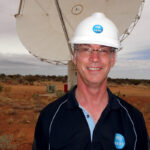 09:00 - 10:00
09:00 - 10:00Keynote 2 - Astronomy in the Curriculum and the Classroom. Where to now?
By Robert Hollow Astronomy and Space Science • CSIRO, AustraliaAstronomy is a subject that can inspire, engage and enthral children. Basic astronomical concepts are found in most science curricula around the world although astronomy is seldom presented as a separate subject. Recent reviews of global curricula have identified strong similarities in content and, also, the year level at which the content are introduced. Research however reveals that it is a topic often poorly taught and one in which students complete their education with misconceptions still heavily entrenched. Many teachers lack the confidence or training to successfully address these misconceptions in order to effectively teach the required syllabus. All of these points are implicit in the establishment, value and role of the new Office of Astronomy for Education. Whilst the likelihood of astronomy ever having a central role in science curricula is slight it provides an excellent example of a gateway science. Rather than just focussing on basic astronomical concepts (though not ignoring or removing them), astronomy can also be used to engage students and help them develop critical thinking, inquiry skills, information technology, understanding of big datasets and accessing. modern observing opportunities. Using examples based on recent curricula opportunities and issues at the school level are discussed, particularly in the context of the recent IAU Framework for Astronomy Literacy Some challenges for groups working on developing or implementing new programs are presented together with a call for ongoing collaboration and sharing of best practice.Planetarium- 10:00 - 11:00
Workshop - Activities in and around planetarium
By Kamil Deresz Copernicus Science CentreThe planetarium is a natural place to run informal education. It stands between layman and scientist with the freedom to show cosmos and natural sciences. It can be a venue for different formats. In this workshop, we would like to discuss the limitations and opportunities. We would like to use topics below as a 'cookbook' which can be used to make 'menu' of the place like a planetarium or space center. Proposed topics: - how storytelling can serve and limit explanation? - recorded lector or live presentation? - concerts, lectures, and other special events - all you need is love - how to keep a balance between science and art - live music, how far to depart? - hands-on activities/workshops/events + more can be gathered during the conference. We are open to going through these or similar topics as a workshop or debate as well.Room Scorpius - 10:00 - 10:15
Teaching stellar astrophysics in the Middle School
By Jorge Ernesto Horvath Astronomy, IAG-USP, Sao Paulo, BrazilCo-authors: M. Bandecchi and Paulo S. Bretones. Introducing astronomical contents beyond the well-known Solar System subjects is a challenge in Education. It has been suggested that stars are excellent examples of a variety of phenomena (heat transfer, fluid equilibrium, light) which are already an established part of the corresponding Physics courses, and serve to integrate them into a consistent body which improves the cognitive efficiency to a considerable degree. We develop and apply a didactic sequence on stars devised to target an audience of 14-15 years old students in a Brazilian Middle School. We show how these classes changed the perception of the astronomical setting for them, and follow their cognitive evolution for a full year after the lessons. We conclude with a positive evaluation of the impact of the experience, as emerging from the applied tests. In addition, we discuss the limits of the empirical approach to science within this subject, at the edge of the "natural science" nature when compared to the Solar System contents much easier to be directly experienced.Planetarium - 10:00 - 11:00
Workshop - Promoting diversity through astronomy education
By Tessa Vossen Astronomy and Society Group Leiden ObservatoryScience, Technology, Engineering and Mathematics (STEM) knowledge and skills are increasingly important for participation in 21st-century society as well as for employment. However, studies show that STEM activities may alienate girls and minorities from pursuing a career in STEM fields. One of the goals of the Dutch National Research Agenda is to make the student population majoring in science as diverse as the Dutch population by 2040. In this project, we aim to design inclusive STEM educational activities appealing to the diverse population of Dutch elementary school children ( 9-12 years old) based on cutting-edge research astronomy topics of gravity and light. These activities have been developed in co-creation sessions by researchers and professionals in astrophysics, physics, science communication, and science education. The activities will also be tested and reviewed by elementary school teachers and children, and peer-reviewed through IAU astroEDU. In this workshop, we ask the participants to be part of the co-creation process and think about concrete instructional strategies for astronomy projects to make them more diverse and inclusive. We will employ Gamestorming exercises to review some already developed materials and think of possible instructional strategies together. This workshop will help us to refine our designed materials and make them ready for the testing and implementation phase. Let’s work together on how to make astronomy activities in education as diverse, representative and inclusive as possible, with options to differentiate for different learning preferences, learning levels, interests and points of view of young learners.Room Sagittarius - 10:15 - 10:30
Teacher Training and School Curriculum: Examples from Canada
By Julie Bolduc-Duval Discover the UniverseWhen offering astronomy workshops for teachers, how closely should we follow the expected school curriculum? Each province across Canada has its own science curriculum, which creates a challenge for pan-Canadian programs such as Discover the Universe. Our online astronomy training program for teachers has navigated the similarities and differences in these curricula for nearly 10 years. During this presentation, I will discuss the challenges and constraints of offering online training adapted for several curricula, the solutions we are using, as well as the recent inclusion of Indigenous knowledge.Planetarium - 10:30 - 10:45
Inspiring Educators via Astronomy Teacher Training Workshop in Thailand
By Khomsan Thuree National Astronomical Research Institute of ThailandThe Astronomy Teacher Training Workshop” is a workshop series for science teachers in Thailand with the ultimate goal to educate and inspire participants who can further inspire students across Thailand on the topic of astronomy. The workshop can be separate into three levels. The “Basic Workshop” are held five times annually across different regions of Thailand with the main purpose to inspire astronomy teachers so they can further inspire many more students. The basic workshop focuses on classroom activities and introducing participants to basic stargazing and astronomy as extra-curricular activities. Participants also learn the basics of telescope and organizing star party events. The “Intermediate Workshop” focuses heavily on the extra curricular aspects where participants learn fundamental amateur astronomy skills that helps them becoming supervisors to school astronomy club. Participants receives hands-on experience on practical astronomical knowledge and able to organize and lead their own star parties. The “Advance Workshop” focus on project-based learning in astronomy and aimed to produce advisors to student astronomical science projects. The workshop series has been running annually since 2009 and the teacher network resulting from the workshop has been fundamental in allowing the National Astronomical Research Institute of Thailand (NARIT) to coordinate a national effort in organizing astronomical events.Planetarium - 10:45 - 11:00
Cosmic Mining: involving students in real astronomy research
By Laura Thomas Institute for Research in Schools"The Institute for Research in Schools has partnered with the UK Astronomy Technology Centre to involve secondary school students in identifying potential targets for the James Webb Space Telescope. Students are working with around 8,000 spectroscopic observations of stars taken by the Spitzer Space Telescope to identify where in their lifecycle they are. Interesting candidates for further study are being looked for in amongst this data and students will partner with astronomers to support the submission of a proposal for observing time. Over thirty schools across the UK and Europe are partnering with astronomers on this project. We report on the methods and approach used to develop the knowledge and skills of participants and the impact it has had on them. Insights and feedback from project partners including teachers, students, astronomers and public engagement professionals will be shared along with recommendations on how to develop your own effective research collaboration with schools using authentic research data. This project is part of a national campaign of public engagement with the James Webb Space Telescope co-ordinated by the Science and Technologies Facilities Council. Project team members include: Laura Thomas, Director of Education, Institute for Research in Schools Dr Olivia Johnson, Public Engagement Programme Manager, Science and Technologies Facilities Council Dr Alistair Bruce, PDRA, Institute for Astronomy Dr Olivia Jones, Rutherford International Fellow, UK Astronomy Technology Centre"""""""Planetarium - 11:00 - 11:30
Coffee Break
Re-fuel and get back to absorb the beauty of knowledgeGround Floor - 11:30 - 12:30
Workshop - Visual Thinking Strategy Approaches to Teaching Astronomy
By Stephen Pompea National Optical Astronomy ObservatoryCo-author: Nancy L. Regens (University of Arizona) Visual Thinking Strategies (VTS) is an approach to teaching art that has gained resonance in its applicability to the teaching science. An art-based approaches to teaching astronomy has an appeal to youth who may identify with art more than with science or who view science as a static rather than dynamic process. Since students with strong visual-spatial thinking skills can be successful in either art or science careers we feel that stronger efforts need to be made to add some of the pedagogical techniques that work in the art education field to science education. In this workshop we introduce and practice the basics of the Visual Thinking Strategy approach used in art museums and in art instruction to create a more interactive learning environment for astronomy. This approach not only promotes a deep appreciation of astronomical imagery but also stimulates and encourages questioning and inquiry. The VTS approach allows students to see the mystery and questions at the heart of science and to appreciate the science investigatory process, thus countering a common misperception that science is memorization of factoids. We believe that the VTS approach, and other art-related approaches, can be very effective in promoting inclusion, diversity, equity, and empathy in communicating astronomy.Room Scorpius - 11:30 - 11:45
"Cosmo Explorers": videogames at school for STEM
By Marco Brusa Infini.to Planetarium of TurinCosmo Explorers is a project aimed at developing novel and different strategies in formal education context (11-18 years old students) using videogames for educational purposes. Teachers encourage students to play with a videogame in the classroom to learn not only STEM, but also soft skills and teamwork attitude while having fun. The core of Cosmo Explorers is a competition for the creation of the best space exploration program using the videogame Kerbal Space program (KSP). KSP is a space flight simulator that allows the player to experiment with the construction of rockets, satellites, spacecraft and rovers, send them into orbit or undertake long interplanetary journeys taking into account gravity, thrust of the engines, fuel availability, energy supply, aerodynamics and much more. The flexible and modular nature of the project allows each teacher to fine-tune the activities according to their needs, moving from skills development (such as management of group work, solution of complex problems, management of medium-long term projects, learning from mistakes, ability to forecast, risk assessment and decision making, digital skills) through educational contents (kinematics and forces, gravitation, celestial mechanics, technology, economy). The project (granted by the Italian Education and Research Ministry MIUR) was led by Infini.to - Planetarium of Turin with the National Institute for Astrophysics (INAF) and ALTEC (Aerospace Logistics Technology Engineering Company). It had a duration of 24 months and involved several teams for a total of more than 100 teachers and 1.000 students all over Italy.Planetarium - 11:30 - 12:30
Workshop - Earth Rising
By Iris Nijman NOAO, Gina Maffey Freelance environmental researcher and communicatorYoung people feel increasingly overwhelmed with the burden of issues such as biodiversity loss, increasing global temperatures and food security as a direct result of environmental degradation of planet Earth. This phenomenon, recently dubbed ‘eco-anxiety’, requires an array of solutions - and one that holds great potential, is that of astronomy education. The power of astronomy education to evoke an awareness of our place in the Universe and an innate understanding of Earth has strong historical roots. In more recent times, this was encapsulated in the response to “the most influential environmental photograph ever taken”. Taken during a lunar orbit on December 24, 1968, ‘Earthrise’ is noted as one of the fundamental catalysts for the global environmental movement. As today’s students take to the streets across the globe to demand governments to put environmental protection high on the political agenda and address the climate crisis, educators are faced with key challenges: how do we incorporate environmental education into our curricula? How do we make people more aware of their environment? How do we prepare the next generation for the future? How do we get people to act in an environmentally responsible way? In this workshop, we want to discuss the links between astronomy and environmental education and explore the different goals between ‘traditional’ and ‘active’ astronomy/environmental education. Together with participants, we will look at what opportunities we all have to move beyond disciplinary boundaries and exploit such connections in an interactive and stimulating way.Room Sagittarius - 11:45 - 12:00
Voices coming out of hands: Teaching Astronomy for the Deaf
By Marcos Voelzke Cruzeiro do Sul UniversityAstronomy learning among deaf is currently a remote possibility in Brazil, something that hardly happens or, when it happens, is usually very limited. In order to improve Astronomy Education among deaf children and school-aged youth, it is necessary to expand the resources of the Brazilian Language of Signals (Libras, acronym in brazilian portuguese), strengthen the preparation of teachers, develop teaching resources more aligned with sensory experience of the deaf and even rethinking organizational aspects in classroom settings. Astronomy is very important for the educational background of the deaf and has a significant role in its introduction to the fundamentals of science and motivation for scientific knowledge.Planetarium - 12:00 - 12:15
Working with authentic astronomical data in an education setting - a practical perspective
By Markus Pössel Haus der Astronomie/Max Planck Institute for Astronomy"Summer internships for high school students at Haus der Astronomie, which we have offered since 2009, we try to make use of archival data to provide genuine research experience to our participants. This talk recounts how our practices in using archival image and spectral data have evolved over time, describes some of the challenges of working with real data (and some of the resulting limitations) that our students have faced, and closes with some more general thoughts on integrating data into educational settings, and on what research astronomers can do facilitate educational use of their data. References: M. Pössel 2019, A Beginner's Guide to Working with Astronomical Data, arXiv:1905.13189 M. Brea-Carreras, M. Thiel and M. Pössel 2018, Simulating Tidal Interactions between Galaxies: A Pre-University Student Project, arXiv:1812.00779"""""""Planetarium - 12:15 - 12:30
Implementing project-based learning to Astronomy Education at the national level
By Matipon Tangmatitham National Astronomical Research Institute of ThailandWe introduce a project-based learning as a supplementary extra-curricular activity to expand upon students’ prior interests in astronomy. Participating high school students from Thailand are engaged in a long-term project-based learning via astronomy research project. After an introductory workshop, students are encouraged to come up with their own topic and problem statement in which they embark on a 10-month journey to investigate, understand, and attempt to devise a predictive model that would describe the laws of nature based on their observations. A great emphasis is put on engaging the student to question and pursue their own interests and curiosities. Topics range from basic naked eye observations, invention, computer programming, to a more conventional observational astronomy using robotic telescope to perform astrometric and photometric measurements. Supervision is offered via a system of mentors/advisors but is strictly limited in favor for self-investigation. Progress and regular updates by the students are tracked remotely via social media. Students present their final works in an annual astronomical student conference at the national and international level. As a result, students are able to expand on their own curiosities, gain valuable hands-on experience on critical-thinking, problem-solving, and able to present their work in public. This on-going annual project has far-reaching consequences that is slowly transforming the overall landscape of Thailand secondary level astronomy education.Planetarium - 12:30 - 13:30
Lunch - Day 2
Eat, Drink and be merryGround Floor - 13:30 - 14:00
Poster Session - Day 2
- 14:00 - 14:15
INTERSTELLAR - INTERdisciplinary Study of (sTudEnt) Learning in a pLAnetaRium
By Mieke De Cock KU Leuven - Department of Physics and AstronomyResearch shows that many astronomical phenomena are difficult to grasp and to teach. As visualising the night sky is a main goal of a planetarium, it might be a powerful setting to enhance (student) learning of these concepts. Planetariums have a long history in supporting astronomy interest, but the impact of the planetarium visits on the effective learning is vastly unexplored and there are still many open questions about the role the unique visualisation possibilities in a dome can play in educating various kinds of audiences. INTERSTELLAR is an ambitious long-term interdisciplinary research programme on the learning in a planetarium. It is rooted in a unique collaboration between the Planetarium of Brussels and different research groups of the KU Leuven, which together comprise a wide range of expertise, from Physics Education Research (PER) over Cognitive and Educational Psychology to Astronomy and Astrophysics. INTERSTELLAR aims at designing a research-based learning environment for astronomical and astrophysical concepts by fully exploiting the unique visualisation possibilities of the Planetarium. Until now, very few planetariums worldwide offer such research-based learning environments to specific audiences as they mostly capitalise on the immersive nature of the displays and the engagement of the audience. The development of an astronomy education research programme for the Planetarium of Brussels would make it unique in Europe by providing carefully designed and tested educational programmes. In the presentation, we will present the aims and general research plan of this ambitious programme and touch upon the general research methodology.Planetarium - 14:15 - 14:30
An Analysis of Peer-Reviewed Papers on Astronomy Education Published From 2007 to 2018 in Japan
By Akihiko Tomita Wakayama UniversityCo-authors: Hidehiko Agata, Junya Terazono, Naoki Matsumoto, Shigeyuki Karino We analyzed 102 peer-reviewed papers on astronomy education published in academic journals from 2007 to 2012 in Japan. There is no single primary academic journal for astronomy education research, and the papers have been published in various journals. About one fourth of the papers are related to topics in elementary school. In total, 80 % of the papers are related to school curriculum contents. On the other hand, the number of papers on training of in-service teachers and museum curators is small. About one third of the papers deal with the lunar phase, which is one of the main topics in elementary school astronomy curriculum. About two thirds of the papers are related to the solar system bodies, which means that most of the research papers do not deal with the realm of stars and galaxies. Compared with cases in international journals and meetings, Japanese astronomy education research focuses on issues in elementary school contents, and in terms of concept, research related to Sun-Moon-Earth system is most common and that on Earth is rare. Most of the papers present the development of teaching material and examples of implementation using the materials in class and evaluate the practice using the post-test questionnaire method. As for the first author of the paper, more than two thirds are university staff and most of the others are school teachers. The number of papers whose first authors are students is small, meaning that the Japanese community needs more effort in astronomy education researcher training.Planetarium - 14:30 - 14:45
What do teachers need to lead enquiry-based projects in Astronomy?
By Nayra Rodríguez Eugenio Instituto de Astrofisica de Canarias (IAC)In many European countries student interest in the STEM careers is low [1]. What can an R&D center do to meet the challenge of engaging students with STEM? In the IAC we have been running the educational project PETeR since 2007. PETeR is an enquiry-based online lab (www.iac.es/peter) which dedicates observing time with professional robotic telescopes to activities and e-science projects aimed at primary and secondary students. During the first years of the project the requests for observations were low and one of the reasons given by the teachers was their lack of knowledge to guide scientific projects in Astronomy. Therefore, in 2015 we began to carry out teacher training courses with three clear objectives: 1) to bring Astronomy closer to teachers in an enjoyable way so that they lose the fear of working on these topics with their students; 2) to provide them with the tools and knowledge so that they can introduce it in a practical way and develop real enquiry-based projects; and 3) to raise awareness of the project. In these five years we have trained over 250 teachers, most of them from Spain, but also from other European countries, in several courses organized in collaboration with other institutions like NUCLIO, the Faulkes Telescope Project, the National Schools' Observatory and the Department of Education of the Canary Islands. In this talk I will present some of the results we have obtained and a summary of the lessons learnt so far. [1] European Commission, Eurostat – Tertiary education statistics (2018)Planetarium - 14:45 - 15:00
Female participation in thesis on astronomy education in Brazil
By Paula Cristina da Silva Gonçalves Simon Universidade Estadual de Campinas - UNICAMPCo-authors: Paulo S. Bretones, Alessandra Aparecida Viveiro This paper presents an overview of Brazilian researches on astronomy education from thesis, analyzing the gender of authorship and investigating the female participation in this field. The database allow us to raise some questions about amount male and female participation in scientific production and about universities, gender of supervisor and type of academic production. The objective is to provide a view about female authorship historical in this area and reflecting about the situation with lens of gender literature, especially the questions about women in science. With the support of literature related to the state-of-art research, the data were analyzed and organized according to the gender of the authors, from 1973 to 2017. With a total of 374 MSc and PhD thesis, 136 (36,4%) were made by women, and 237 (63,4%) by male. From this survey, several elements emerge, reflecting on produced works and gender issues implied in the constitution of the astronomy education research area. The results also show trends in comparison with researches on female participation in Astronomy and Physics.This study should encourage the participation of women in the astronomy education research. Keywords:State-of-art; Gender; Astronomy Education, Women in Science; Thesis; Brazil.Planetarium - 15:00 - 15:30
Coffee Break
- 15:30 - 15:45
Literature review of Master and Doctoral thesis in Astronomy Education in Portugal: overview, progresses and setbacks
By Paulo Mauricio Escola Superior de Educação de LisboaCo-author: Paulo S. Bretones We present the major findings of the work developed until now towards a fine-grain content analysis of Master and Doctoral thesis in Astronomy Education published in Portugal. The categories were the same used by one of us in previous state-of-the-art research, that is: year of publication, institution, school grade level, focus of the study and type of academic research. To this phase, we identified a total of 110 thesis produced between 1999 and 2018. While 58 are available online and thus allowing easy access and study, 52 are not. This implied an effort to reach to those in order to scan the content and perform the analysis. To this stage, we have 15 paper copies that we intend to digitalize with a remaining figure of 37 thesis, mainly, in the Porto’s Faculty of Science Library. Even with these limitations, we could identify two peaks of academic production in this area. The first in 2001 can be associated as the outcome of the first post-graduation in Astronomy established at Porto University (from where 68% of the thesis were developed), and the second in 2012 which would certainly be related to the International Year of Astronomy in 2009. Also, because astronomy is in the curriculum explicitly at the 7th grade, a significative amount of work is related to the production of materials in order to help teachers at this level. Additionally, if the initial thesis were addressed to high school and university education, later, essentially after 2010, a concern with Astronomy education at early years of schooling begin to increase in the overall production.Planetarium - 15:45 - 16:00
Teaching astronomy in Russian schools: challenges, approaches and possible solutions
By Pavel Nikiforov Irkutsk PlanetariumAstronomy was eliminated from the high school curriculum in Russia in 2009 in the International Year of Astronomy. Although the subject was restored in 2017 surveys showed no improvement in astronomy knowledge over two years. The roots of this impasse lie in the absence of practical activities in astronomy classes. Interest and enthusiasm in astronomy and hence the knowledge of the subject could not be reached without real astronomical observations and workshops. (Historically almost every school in the USSR had telescopes and teachers were trained to conduct astronomical observations.) Schools in today’s Russia are not equipped with telescopes. For example, the Regional Ministry of education of Irkutsk oblast (Siberia), for example, has no plans to equip schools with any astronomical instruments. With this situation in mind, possible solutions to these problems are proposed. Firsthand experience is outlined of a collaborative work of the Irkutsk planetarium, regional amateur astronomers’ community and school teachers in Irkutsk region. We give some proposals to teachers looking to boost the astronomy proficiency of their students.Planetarium - Why are you going to Tamra?”, the head of security for El Al Airlines at Pearson International Airport in Toronto, Canada asked of me as I was en-route to Tel Aviv. That question, and the forty-five minutes we were interviewed at security, were done for security reasons. I understood the need for increased security prior to boarding a flight for the Middle East as there had been a recent increase of violence in the Gaza. The question, however, had an undertone. Why were ‘you’ - as in me, a Canadian Jewish man and his twelve year old daughter, going to Tamra, an Arab city in Israel. What could I possibly be doing there, and how would I know anyone from there well enough such that we would be welcomed guests in their home during our visit? The answer was truthful and innocent: we were going to see our friends, who are Arab, and I was to continue working on using astronomy education as the focal point for breaking down societally imposed barriers. This presentation will share experiences of using ethnoastronomy as a means to connect people across cultures and religions, and highlight the often racially charged challenges that manifest when walking this path.Planetarium
- 16:30 - 16:45
Blu and the sky. An astronomical education project for kindergartens based on the model of metacognitive cooperative learning.
By Silvia Casu INAF-Cagliari Astronomical Observatory, ItalyThe creation of the character of Blu stems from the need to find an effective interlocutor in astronomical education for kindergarten (and primary school) sector: Blu is not a dispenser of knowledge, Blu knows nothing, does not know our Planet, he doesn't even know what it is. Children tell him about our world and the Universe, with simple words. Who reads and listens his adventures could explain him many things, maybe obvious and trivial for us but not for Blu. What are days and night? What is a star? And what is the light? Each child discover himself/herself as the bearer of knowledge and experiences and becomes aware of being part of a Universe full of lot of things to be explored. The stories of Blu become an interactive e-book, developed with experts in instructional design and Universal design for learnig, easily accessible to all thanks to the highly legible characters, the transcription of the text in AAC and the synchronized reading of the text. The final product is completed with accompanied by multimedia contents to be downloaded, such as the printable version of the story, the cards for educational activities and the audio book. The talk will present the general outline of the project and its application during the 2018/19 school year in two kindergarten schools of the Cagliari hinterland.Planetarium - 16:45 - 17:00
Einstein Schools Programme: A Project-Based Approach to Encourage Worldwide School Collaboration
By Stephen Pompea National Optical Astronomy ObservatoryCo-authors: Iris Nijman (NOAO), Mark Newhouse (NOAO), Jessica Rose (NOAO), Jorge Rivero Gonzalez (University of Leiden) The Einstein Schools Programme, a global project of the International Astronomical Union 100 Years Celebration, helps schools all over the world to explore the exciting role of gravity in modern astronomy. It is designed to encourage in the spirit of IAU collaborations among schools worldwide. Einstein Schools launched on 1 October 2018, and currently more than 200 schools from 45 countries have signed up. The project encourages teachers to form a student team and it gives them the tools to carry out a plan to explore a topic of choice with their team. An important aspect of the programme is to provide each Einstein School with a science mentor who helps teachers to more confidently explore gravity and astronomy topics with their students, and who act as an inspiring role model for students. During the first year of the programme, we have focused on reaching schools all over the world, creating a website with high-quality resources on gravity and astronomy, communicating regularly with the teachers, finding mentors and pairing them up with schools, and developing a model for schools to become certified Einstein Schools. After this first phase, it is time to reflect on the successes and challenges of the programme. For example, how do we keep teachers from so many different countries engaged and motivated? How do we create a sense of community? In this talk, we want to discuss these successes and challenges and we want to share our plans and ideas for the future.Planetarium - 19:00 - 23:00
Conference Dinner
Come and relish a Bavarian dining experience at Gasthof Neuwirt Garching. Click here to view the locationEvents
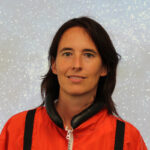 09:00 - 10:00
09:00 - 10:00Keynote 3 - Collaboration and the fear of losing oneself: Teacher Training and Space Education in Europe
By Agueda Gras-Velazquez Scientix, European SchoolNet • Brussels, BelgiumTeachers struggle with lack of time, excess of curricula and often, isolation. Many European initiatives have helped change this through mainly professional development and collaboration. However, collaboration often times causes fear of losing oneself. During this session we talk about the importance of collaboration in Science, Technology, Engineering and Mathematics in general, and Astronomy education in particular, and ways to minimise that fear in teachers and students through different examples used by STEM education projects, including Astronomy, for primary/ secondary school teachers.Planetarium- 10:00 - 10:15
Effective Climate Change Communication Strategies for Astronomers
By Travis Rector University of Alaska AnchorageFrom a social, environmental, and political standpoint, climate change is becoming the defining topic of our time. The need to address climate change has become immediate, with only 12 years to drastically reduce carbon emissions in order to avoid potentially irreversible and catastrophic effects. Unfortunately the public is ill-informed about climate change and its consequences. Fortunately astronomers are well-poised to educate about it. In the classroom and through public talks, planetariums, and K-12 outreach, we reach a large audience. Astronomy is closely connected to the science of climate change, and it is arguably the most important topic we include in our curriculum. Due to misinformation and disinformation, climate change communication is different than for other areas of science. Bad climate communication strategies can be ineffective and even backfire, meaning that simply knowing the science content is not enough to effectively teach it. Talking about climate change requires using effective strategies, for which there is now a considerable body of research. As part of my talk I will introduce (1) resources that will improve their science content knowledge about climate change, (2) effective interactive and inclusive methods for teaching the topic in Astro 101 classes, and (3) established strategies for engaging the public.Planetarium - 10:15 - 10:30
astroEDU - now and Future
By Michael Fitzgerald Edith Cowan University - Institute for Education ResearchastroEDU is a peer-reviewed astronomy education activity repository. Launched in 2013, it currently has over 100 activities spanning astronomy, earth and space sciences. Over the course of it’s history, astroEDU has continuing developed and iterated on it’s approach to undertaken peer review to provide a robust method of quality control. In this talk, the history of astroEDU will be briefly outlined and the new major astroEDU project under development drawing on the recently completed OECD astronomy curriculum review as well as the proposed definition of astronomy literacy published by the IAU.Planetarium - 10:30 - 10:45
Online team work in astronomy and planetary science at the Open University
By Ulrich Kolb The Open UniversityCo-authors: Mark Jones, Judith Croston, Susanne Schwenzer, Sheona Urquhart The Open University (OU) is one of the largest universities in Europe and unique among UK universities in that its curriculum is open to all, delivered entirely by distance teaching, and studied predominantly on a part-time basis. At present there are approximately 1500 students enrolled on undergraduate or taught postgraduate modules in the astronomy, planetary science and space science domain. To facilitate teaching practical science at a distance the OU developed the award-winning OpenSTEM Labs, providing students with real-time control of remote experiments, including our robotic optical observatories PIRATE and COAST in Tenerife, a radio telescope at the OU’s campus, and a planetary surface simulation yard, currently set up for a Mars rover mission simulation. These facilities lend themselves to team working projects, thus maximising the number of students who benefit from a limited resource, and providing a framework for distance learners - who are not co-located and would normally study essentially in isolation - to develop their employability-enhancing team working skills. Here we report on three different team-working projects in astronomy and planetary science, two involving OpenSTEM Labs assets, and one based on data from the SDSS. The projects are somewhat open-ended and designed such that team decisions are required throughout. We present an early analysis of the student experience on these three projects. We combine quantitative and qualitative analysis of online forum discussions with insights drawn from in-depth interviews with students to highlight the factors that may be important in the success of online team work in an astronomy and planetary science context.Planetarium - 10:45 - 11:00
The Moon Camp Challenge – Learning STEM by designing a Moon Base
By Catia Cardoso Aurora Technology for ESAIn this presentation, we will highlight the importance of using innovative educational methodologies and techniques to engage students in STEM learning, and present the outcome of the first Moon Camp Challenge. The Moon Camp Challenge participants have to 3D design their own version of a Moon base which is able to sustain at least two astronauts. The project is open worldwide and it is organised by the European Space Agency and Airbus Foundation, in partnership with Autodesk. The challenge targets primary and secondary school student teams (2 to 4 students each), in two different age categories. Category 1 (up to 12 years old) foresees the use of the Tinkercad 3D design tool, and Category 2 (13-18 years old) makes use of Fusion 360. In their design, the students need to envisage the use of local lunar resources such as lunar soil or water ice. Then they have to describe how their design provides protection from radiation and meteorites, and explain how they would obtain energy and food supplies. Finally, they have to 3D design their Moon base. The Moon Camp Challenge features preparatory classroom activities based on learning-by-design and science experimentation. First, the students will run a number of curricular scientific experiments using the Moon as a real-life scientific context. Then they have to apply the acquired knowledge in an interdisciplinary manner in order to design their own Moon Camp. The Moon Camp Challenge covers and interlinks different STEM subjects including Physics, Chemistry, Biology, Maths, Engineering, Astronomy and Design/3D Modelling.Planetarium - 11:00 - 11:30
Coffee Break
Another recharge, this is also on the house!Room Sagittarius - 11:45 - 12:00
An overview of the current status of Astronomy Education Research
By Paulo S. Bretones Universidade Federal de São CarlosA reviewPlanetarium - In the recent decade, particularly over the last few years, developments in making research-grade telescope technology available to the classroom at little to no cost have been rapid. With the growth of the Las Cumbres Observatory, SkyNET and iTelescope networks, as well as a host of smaller networks, the possibilities for schools anywhere around the globe to utilise real data in their classroom has become viable. In this talk, the current state of robotic telescopes in education is outlined as well as a variety of success stories, possibilities for potential users and current problems being tackled by the field.Planetarium
- 12:15 - 12:30
Review of Astronomy in the OECD curriculum
By Saeed Salimpour Deakin University/Edith Cowan University - 12:30 - 13:30
Lunch - Day 3
Eat, Drink and be merry again, now with new found colleagues!Room Sagittarius - 13:30 - 14:00
Poster Session - Day 3
- 14:00 - 14:15
Astronomy School Education in Chile
By Lara Rodrigues Pontificia Universidad Católica de ChileChile is home to several of the world's biggest telescopes, but even though the Chilean population values astronomy as a national attribute, less than a third of them declare having some astronomical knowledge (Marinovic, 2016). In this regard, in the last years there was a significant growth in astronomy outreach and education programs in Chile, as well as an increase of astronomical topics in the National School Curriculum, but until recently there was no research on astronomy education at the Chilean context. Thus, the purpose of this talk is to discuss, for the first time with research evidence, the current state of astronomy school education in Chile. We present the results of assessing the astronomical knowledge of 169 K-12 teachers and 159 students (ages 15 to 17) using the Astronomy Diagnostic Test (ADT 2.0; Hufnagel, 2002), which shows a high presence of alternative conceptions in curricular topics that agree with those identified in several international studies (Bailey, 2011). We also present preliminary results from a study of teachers’ perceptions on astronomy education in Chile, analyzed with Grounded Theory, and discuss the effectiveness of astronomical courses and workshops offered to Chilean teachers and students.Planetarium - 14:15 - 14:30
Teaching astronomy for non-science students
By Nur Nafhatun Md Shariff Universiti Teknologi Mara (Uitm)Astronomy is a blessed field as it comprises both science and non-science. In Universiti Teknologi MARA (UiTM), there is only one (1) subject dedicated for astronomy especially for non-science students. We have a designated course that bridge between astronomy, culture and religion. Through this subject, the students are exposed to aesthetics, issues and research in astronomy. Other than lecture, the students are encouraged actively participate in Massive Open Online Course (MOOC). Indoor activity is not enough, therefore, the students are given opportunity to get involved with the research by way of conducting mini-projects. The students are required to conduct astronomy project like sunspot observation, urban night light pollution monitoring, building astronomical models and astronomy-based games. We adopted continuous assessment as the best practice for more hands-on involvement and we believe in start small and be consistent.Planetarium - 14:30 - 14:45
21 years astronomy activity of teachers in Iran and create astronomy union for teachers
By Hasan Baghbani Iranian teacher’s astronomy Union/Mehr observatoryIranian teacher’s astronomy Union is the first interdisciplinary teacher union of Iran those teachers from each three levels: Elementary, Secondary school and high school can be its member and work in astronomy and nature fields simultaneously. Before forming this union, although there are some contents related to the astronomy there is not any schedule or widespread and purposeful attempts to teach astronomy to the teachers, developing content knowledge and practical knowledge and utilize the great sky of Iran in order to teach astronomy to the students. Along approval, formation, and convincing the ministry of education of Iran about the existence of teacher astronomy union, there's been widespread attempts by the management of Hassan Baghbani from 21 years ago till now in Bushehr. Ministry of education of Iran found the Astronomy as an important and useful field and approved the formation of ITAU in 2015, as a result of 20 years attempts. After many years of activities there are 20 active local groups of teachers and students in Bushehr and 9 more associations in other provinces of Iran .This association is busy with teaching the teachers and teacher-students especially in underprivileged. Till now more than 2000 teachers have gained education in this field from this union. Also, about 10000 students annually participate in different activities and workshops in different ways. Teaching astronomy to the teachers, motivating the teachers, and forming local teacher groups are some of the aims of this union.Planetarium - 14:45 - 15:00
Integrating Space Science Education to the Basic Education Curriculum: A Case Study of the Philippines
By Rogel Mari Sese Regulus SpaceTechDespite the interest among young students, space science education in developing countries such as the Philippines is a challenging endeavor mainly due to the lack of institutional support and integration into the educational system. The Philippines initiated a Space Science Program (SSP) Pilot Testing from 2013 to 2018 to enhance the state of astronomy and space education in the country. Space science classes were conducted as an 80-minute weekly after-school class for pre-school, elementary and high school students of Diliman Preparatory School. Each class was conducted on a team-teaching basis and utilized various modes of teaching, from traditional lectures to hands-on experiments to ICT-based education, in order to enhance the student’s learning experience and emphasize the learning concepts and objectives. Unique topics included in the Student’s Manual developed by the authors ranges from atmospheric science, Solar System, astronomical observation, galactic astronomy and satellite technology. As a counterpart, science teachers in the school were also trained and provided a Teacher’s Handbook to supplement their knowledge in astronomy and space science. It was observed that elementary students demonstrated the strongest interest in learning astronomical concepts while high school students had lesser enthusiasm, mainly attributed to the increased academic load of high school students. In contrast to the government-prescribed curriculum, it was observed that the concepts were presented in a more systematic manner and appropriate for the student’s current grade level. The SSP Program will be further tested in selected schools in the Philippines beginning in 2020 as part of the K-12 curriculum.Planetarium - 15:00 - 15:30
Coffee Break
One last recharge before the grand finale!Room Sagittarius - Where to next?Planetarium
Important Information for All presenters
Presenters
The venue of your talk will be the planetarium of the ESO Supernova, which is arranged like a lecture theatre. The use of a headset microphone is mandatory – this will be provided for you. You have 15 minutes in total for your talk, including time for questions. We have a very full programme and the convenor of the session is obliged to be strict with the time limit. Please respect the time given for your talk. Regarding your presentation we advise you to use PDF, but you can also use PowerPoint or OpenOffice Presentation. If you create your presentation on Keynote or any other system you should export it to PDF or PowerPoint.
For logistic reasons we ask that you send us your presentation in advance. For files up to 5MB you can send it to us directly. For files larger than 5MB we recommend using a cloud hosting service (e.g.: WeTransfer) and sending the link to the same email. In any case we need your files at the latest on the day of your talk, by 9:00 AM at the latest. You can upload your files to our system at ESO Supernova reception during registration.
Our computer system in the planetarium runs Microsoft Windows 10 with Microsoft Office 365 ProPlus 2016, Adobe Acrobat Reader DC and OpenOffice 4.1.6. Also, audio is available from this PC.
Wireless is available in the planetarium using eduroam or ESO-Supernova networks.
You will find a Speaker Photo Release Form here (download) for your information. We’ll ask you to sign the form when registering at ESO Supernova.
Workshops
The venue of your workshop will be one of our Seminar rooms on the 4th floor of the ESO Supernova. The use of a headset microphone is mandatory – this will be provided for you. The maximum duration of your workshop is 45 minutes followed by 15 minutes for tidying up the workshop. The workshop programme is very full and, as such, you should ensure that your workshop does not last longer than the allocated time, so that other workshop providers have appropriate time to prepare their sessions. There are breaks before every workshop (coffee/lunch) during which you can set up your workshop. The room is equipped with a digital projector and a sound system. To use this your laptop has to be connected to our system via HDMI or VGA cable that we’ll provide. Internet is available in the seminar rooms via WIFI. If you want us to print worksheets for your workshop, please send us your pdf no later than 12. September.
Posters
Posters must be A0 and portrait
We provide poster boards and pins
Participants must remove their posters at the end of each day (if you do not wish to take your poster back with you, you could leave it up and we will remove and destroy posters at 17:30 each day)
Times when poster presenters can put up their posters:
Monday posters:
Sunday 12:00-17:00 or Monday 08:30-09:30
Tuesday posters:
Monday 16:30-17:30 or Tuesday 08:00-09:00
Wednesday posters:
Tuesday 17:30-18:00 or Wednesday 08:00-09:00
Location



